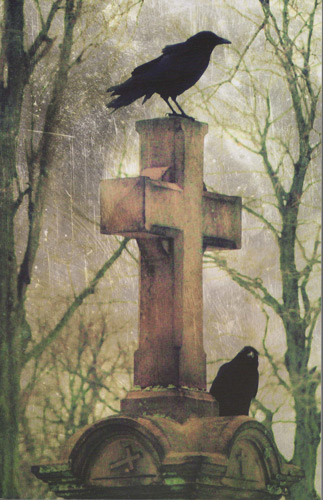Gargoyle – 2014
A subtle, yet nearly palpable emotional experience awaits readers of Gargoyle 61. The nonfiction, poetry, and fiction elicit intense emotion, while at the same time balancing this emotion through tone, diction, and humor, leaving the reader moved but not overwhelmed. A subtle, yet nearly palpable emotional experience awaits readers of Gargoyle 61. The nonfiction, poetry, and fiction elicit intense emotion, while at the same time balancing this emotion through tone, diction, and humor, leaving the reader moved but not overwhelmed.
Nonfiction opens this issue of Gargoyle with Angela Featherstone’s “God Said No.” The story follows the young narrator who has just started her first period while at a religious camp with her family. The narrator talks a lot about the state of her family, from explaining that her father had kidnapped her when she was young, to the fact that her mother and stepfather beat and molested her. However, this theme that could easily become emotionally overdone is balanced through a steady, calming tone maintained throughout the piece. At one point the narrator’s stepfather wants her to pull up her nightgown so he can hit her with the belt, but she is embarrassed by her emerging pubic hair and has nothing on beneath the gown. Her mother enters the scene to hold her daughter down and pull up the nightgown. After asking her husband if he needed help, the mother is described as being “psychotically jubilant at the prospect” of beating her daughter. The entire scene is described in what should be infuriating detail, and yet the reader is constantly tugged toward a state of calm rage because of the steady tone. The tug between calm and overwhelming emotion is something that the reader is promised in this first piece and lasts throughout.
Joanne Rocky Delaplaine achieves a similar balance in her poem Gravid. On the surface, an expectant mother says what her wish for her unborn daughter is. The descriptive quality of the poem is such that readers are not only brought in to experience the physical changes, but they also experience the emotional change that takes place through pregnancy. This is best seen when the speaker says:
I watch my breasts, my
belly stretch. She kicks, she knocks, she
bucks, butts, she bulls. I rock, I sway,
I tell her, Take your time [. . .]
In these words the reader almost wants to cringe at the beating the mother takes; it is almost frightening. But, when the mother speaks and tells the child to “Take your time,” any fear is relegated to the same tug between calm and rampant emotion that that we see in Angela Featherstone’s piece.
While Featherstone used calming tone to offset the emotions of her piece and Delaplaine used a statement of love in hers, Raima Larter uses well-timed comedy in “The Healer” to deflate the anger and frustration that the rest of the fiction piece elicits. In this story, a woman with breast cancer has decided to seek the advice of a healer. The woman is clearly hesitant and afraid; the reader cannot help but feel sympathy towards her. The healer, on the other hand, is realistic almost to a fault. She is brutally direct. The woman explains that she has been tired for a year but does not know why. The healer then asks about the woman’s diet and the woman realizes she had not been eating very much either. There is no sympathy from the healer when she sarcastically replies, “That would explain some of the tiredness now, wouldn’t it?” To make matters worse, the healer practically kicks the woman when she is down by adding, “Isn’t ‘not eating’ enough of a symptom to get you into the doctor?” The reader cannot help but feel sympathy for the woman, and there is also an undeniable anger and frustration that arises towards the healer. Throughout the piece, the narrator consistently makes references to the fact that she thinks the healer is more likely to be a witch than anything, even referencing the possibility that the liquid medicine the healer gives her might have been made with “eye of newt.” These moments are strategically placed right after the more intensely brutal comments from the healer. Just as the anger rises, it is dampened ever-so-slightly by the humor. While readers cannot help the anger, they also cannot help smiling through it.
These works are a reflection of the balance that this issue of Gargoyle hosts. There is always a strong emotional reaction to every piece, but those emotions are constantly kept in check by various devices such as tone, diction, and humor. Readers are sure to find themselves in a continuous match of tug-of-war.
[www.gargoylemagazine.com]





